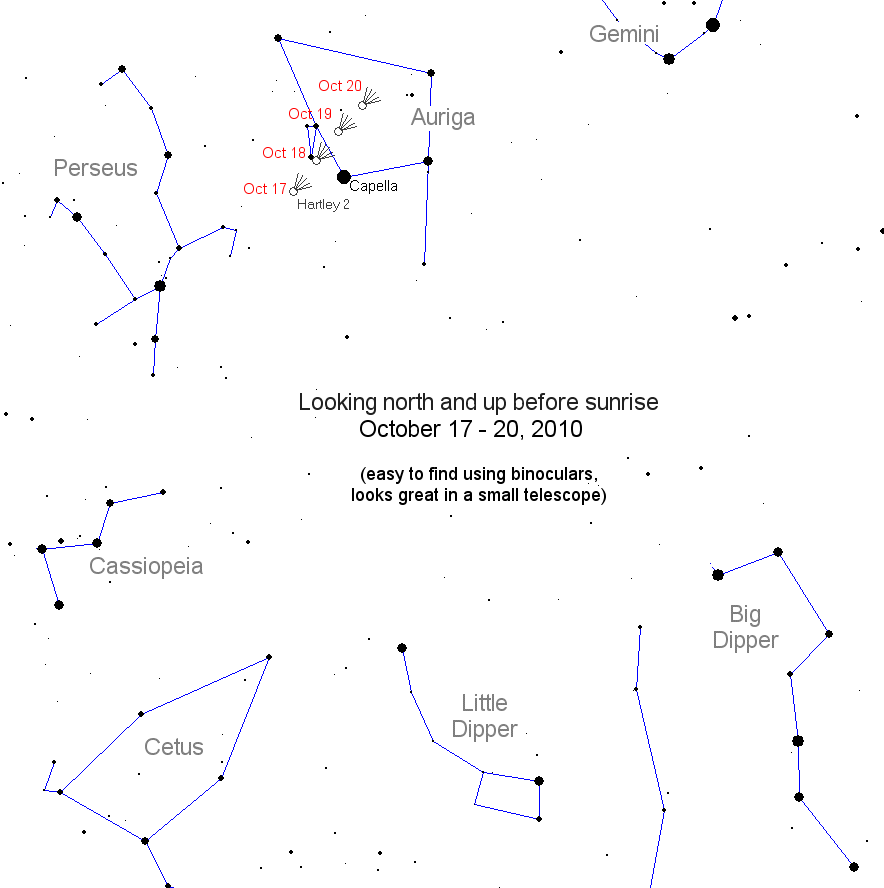Skimming by Earth as close as 11 million miles on October 20, the apparently young Hartley 2 comet will be nearly visible to the unaided eye. With binoculars, it will appear even better as a fuzzy, green blob, and a backyard telescope will offer excellent viewing.
The next several days should be busy mornings for amateur astronomers, and will also be a great time foranyone to do some easy viewing of a special celestial event.
Head outside while it is still dark before sunrise, and look upward to the north. Passing through the constellation Auriga will be an unusual green blip from October 17 through October 20.

Sky map for Comet 103P/Hartley 2 on October 17 through 20. Courtesy Spaceweather.com
Discovered in 1986 by Malcolm Hartley, Comet 103P/Hartley 2 orbits the Sun about every 6 1/2 years. Based on current estimates of mass loss, it's expected to last for another 700 years. [ READ MORE ] What's particularly interesting about this comet is that it is relatively small--just less than a mile in diameter--but the nucleus is still very active.
On November 4, 2010, NASA's Deep Impact/EPOXI spacecraft will venture only 435 miles away from the comet to frantically take images and data about the unique comet. At this point in the comet's orbit, it will be about at its closest approach to the Sun, called the perihelion distance, and the ice formed during it's long journey in the outer solar system will be vaporizing at rates that are much higher than other previously observed comets.
EPOXI will be close enough to take stunning images of out-gassing, and it will potentially observe physical features directly on the surface of the nucleus at a resolution of 7 meters per pixel.

Orbit Diagram of Comet 103P/Hartley 2 generated from NASA's JPL Small-Body Database Browser.
This study is so important because Hartley 2 will be only the fifth comet nucleus viewed up close and personal by NASA. And, comets are critically important because they represent untouched remnants from the formation of our solar system. These chunks of pre-system debris did not get sucked into a forming planet long ago, so they contain material that was present way before even the Earth started preparing itself for the development of life.
Be sure to learn more about this exciting Comet 103P/Hartley 2 and how NASA is preparing to study the orbiting body [READ MORE ]. Take the time this week to head out in the early morning and look up for the green, glowing blob that might prove to be a treasure trove of new scientific understanding.




Comments